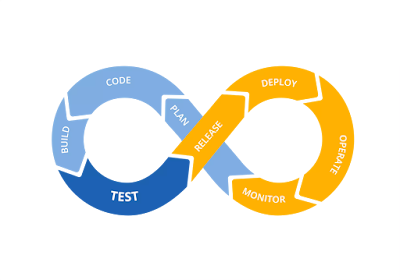Graph database vs Relational database
Graph database vs Relational database
 |
| what is database |
What is database?
A database is a collection of logically related information in an organised way so that it can be easily accessed, managed and updated. Some other operations can also be performed on database such as adding, updating and deleting data.
A database could be simple as a single text file with a list of names or it could be complex as a large bunch of text files including some data. On the basis of different types of information, databases are of various types. Here, we will talk about Graph and Relational databases.
Full article: http://entradasoft.com/blogs/graph-database-vs-relational-database
Graph database
 |
| graph database |
Both nodes of data and their relationships are named and can store properties represented by key/value pairs. Nodes can be labelled to be groups.
Properties of Graph database
- They always have a start node and an end node.
- They make the graph a directed graph.
Graphs are flexible so it allows the user to insert new data in existing one without loss of application functionality. Some notable graph databases are: Allegro Graph, Amazon Neptune, Infinite Graph, Oracle Spatial and Graph, Orient DB, RDFox, Teradata Aster, TerminusDB, etc.
Relational database
 |
| relational database |
Relational database is a digital database based on the relational model of data It is a type of database that stores and provides access to data points that are related to one another. Relational databases are based on the relational model, an intuitive straightforward way of representing data in tables.
This model organizes data into one or more tables of columns and rows with a unique key of identifying each row. Rows are also called records or tuples. Columns are also called attributes. Generally each table relation represents one “entity type”. The rows represents instances of that type of entity and the columns representing values attributed to that instance.
Properties of Relational database
- Values are atomic.
- Each row is unique.
- All of the values in a column have the same data type.
- The sequence of columns is insignificant.
- Each column has a unique name.
- Integrity constraints maintain data consistency across multiple tables.
Some popular Relational Database management systems are: DB2 and Informix Dynamic Server-IBM, Oracle and RDB-Oracle, SQL Server and Microsoft Access
From the above properties of both databases, we have come to the conclusion that both databases are better than one another in different ways. As the Relational database shows results in the form of rows and columns. Which is easy to understand. Graph database, on the other hand, exhibits data or information in the form of any of the three different types of graphs. But everyone cannot able to understand graphs. The relational database is only concerned with data and not with a structure which can improve the performance of the model.
On the other hand Graph database is more flexible than Relational database. It exhibits higher performance for complex deep analytics while the Relational database has poor performance for deep analytics. Graph database is more flexible than Relational database in another manner, As it exhibits higher performances for complex transactions than Relational database.




Comments
Post a Comment